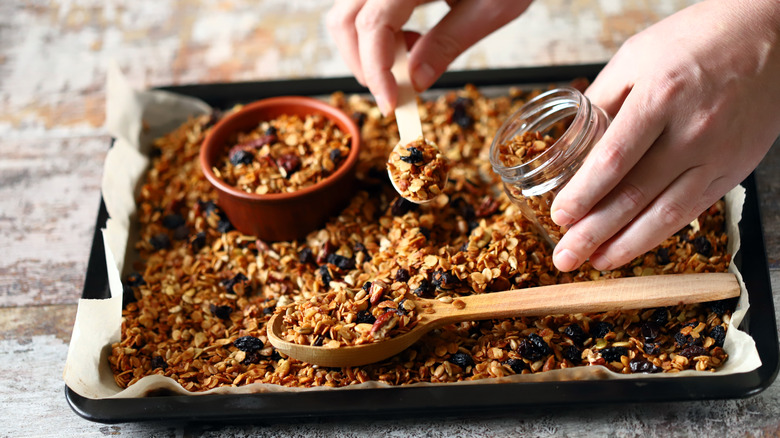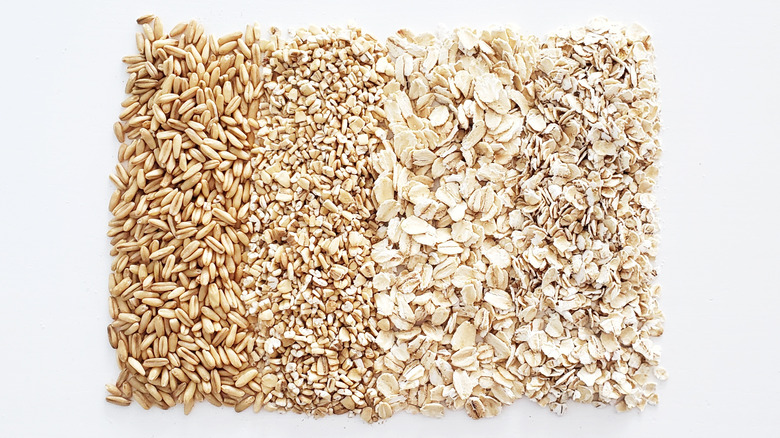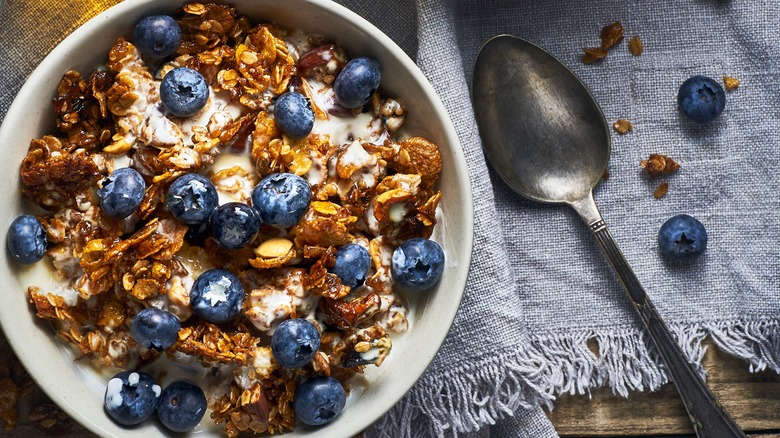For The Ultimate Granola, Stop Using Quick Oats
Whether it's a recipe you've discovered that's become your new go-to or you've created your own ideal concoction of toasty ingredients over time, a good homemade granola tastes like comfort. There's something about granola — its crunch, its roasty flavors, its warm spices, its nuttiness, its delightful smell — that gives us a familiar, warm-and-fuzzy feeling, whether we eat it by the handful or sprinkle it on our morning yogurt.
One of the best things about granola is that you can mix and match ingredients and flavors however you'd like, and add all sorts of goodies to your batch, notes Dr. Axe. But one ingredient is essential to any granola: oats. Oats are the foundation, and the foundation matters. And while there are several options to choose from, not all are created equal when it comes to making granola.
Most will get the job done. But for the ultimate homemade granola, you'll want to say goodbye to quick oats. We'll tell you why, and what to try instead.
The difference between the oats
There are typically four different kinds of oats that you'll find in the breakfast aisle: steel-cut oats, old-fashioned (or rolled) oats, quick oats, and instant oats. It can be a little confusing trying to choose one to eat for breakfast, let alone for the perfect granola recipe. But for the purposes of baking a crunchy, delicious homemade granola, the most important factors to consider are shape and texture.
It's fitting that the white-haired, hat-wearing man we all think of when we think of oatmeal would offer a helpful cheat sheet to differentiate between the various types of oats. Per Quaker Oats, when it comes to shape and texture: steel cut oats are chopped and chewy, old-fashioned oats are flat and firm, quick oats are thin and smooth, and instant oats are fine and soft.
With these textures in mind, it's clear that steel-cut oats are too gritty and instant oats too insubstantial to deliver a favorable granola. So for many, the question comes down to either old-fashioned or quick oats. Understandably, many opt for quick oats; visibly there isn't much difference, the two seem interchangeable, and quick oats bake just fine (quicker, even). But just fine isn't what we want – we want the ultimate.
Here's why you should stick to old fashioned oats
The answer to the best oats question? Old fashioned. The Forked Spoon explains that they're made by steaming whole-grain oat kernels (or oat groats) and partially cooking them before pressing them in a mill to get the shape, consistency, and texture we know. The main difference between old-fashioned and quick oats is that quick oats are fully cooked before they're pressed; that's why they cook faster, and also why their final texture turns out a bit mushier.
When you think granola, you want hearty and crunchy, right? So the best option for baking granola is old-fashioned oats because they're thicker and chewier by nature — which holds up better when baked. Since quick oats will cook faster, this can make the typical low-and-slow granola baking method tricky, and in the end, they'll fall flat when compared to rolled oats in terms of that heartiness and crunch we're going for.
So stick to old-fashioned oats: they'll keep their firmness throughout the baking process, giving the final result more texture, more crunch, and more comforting bliss to bite into.


